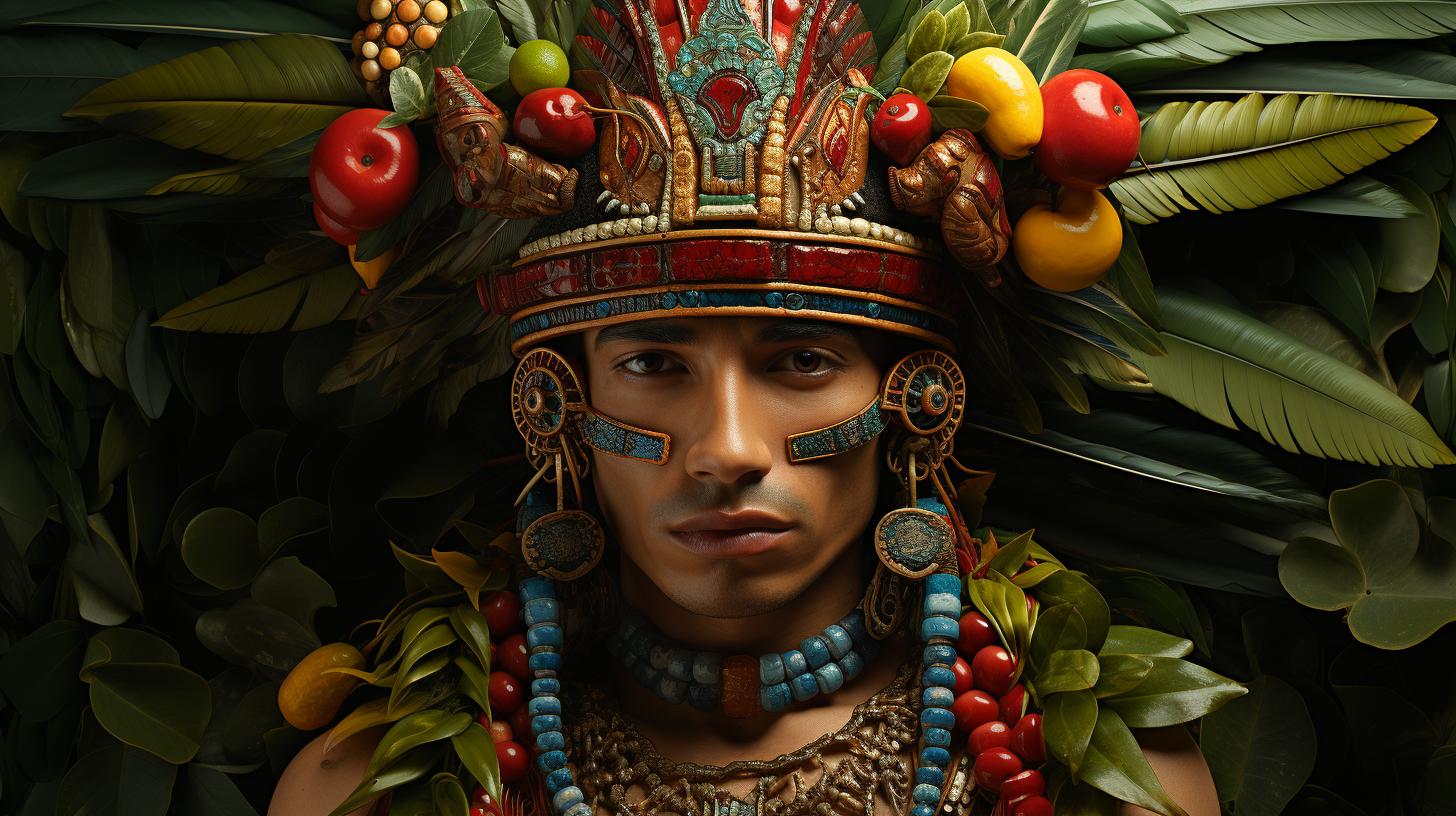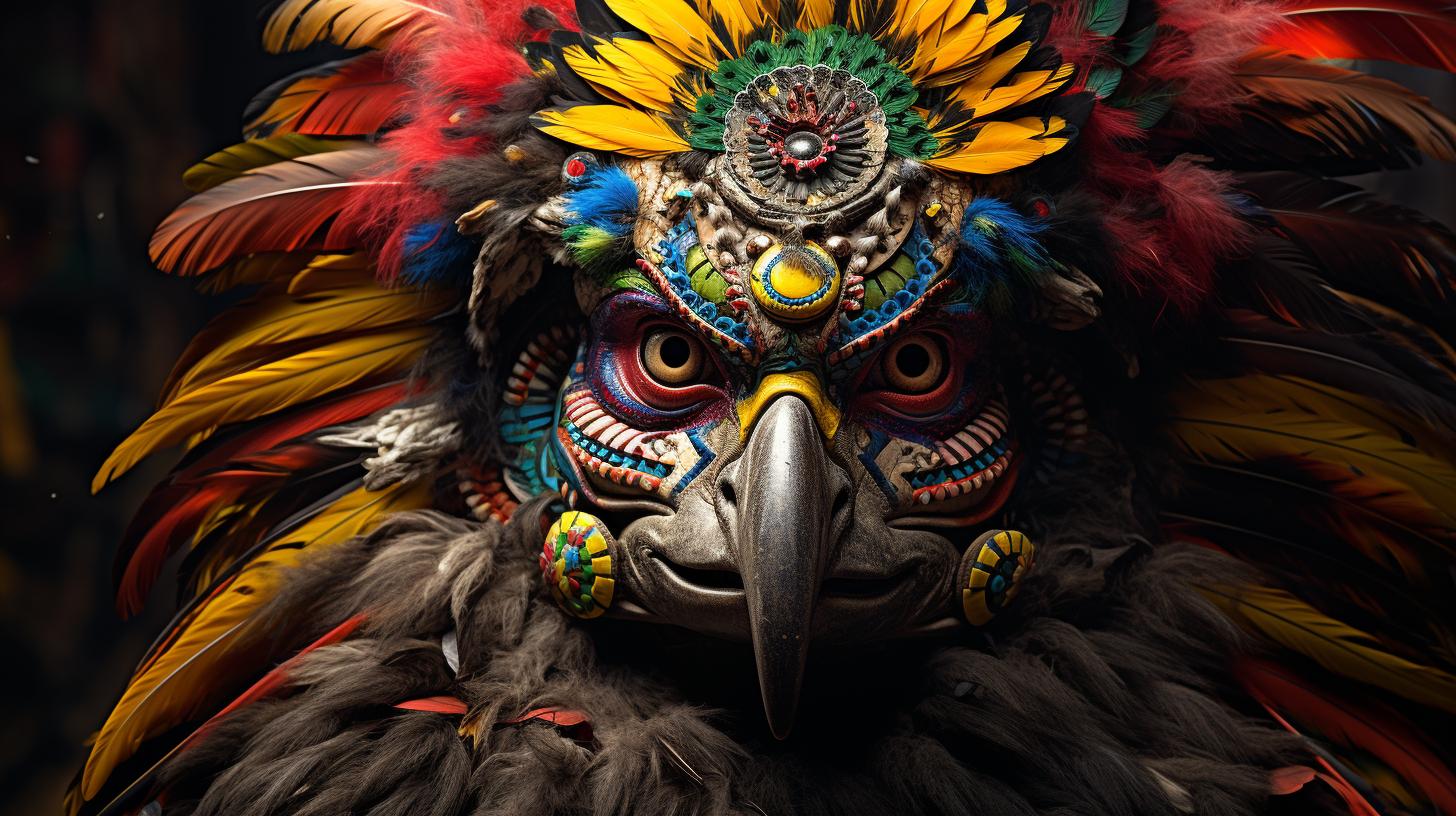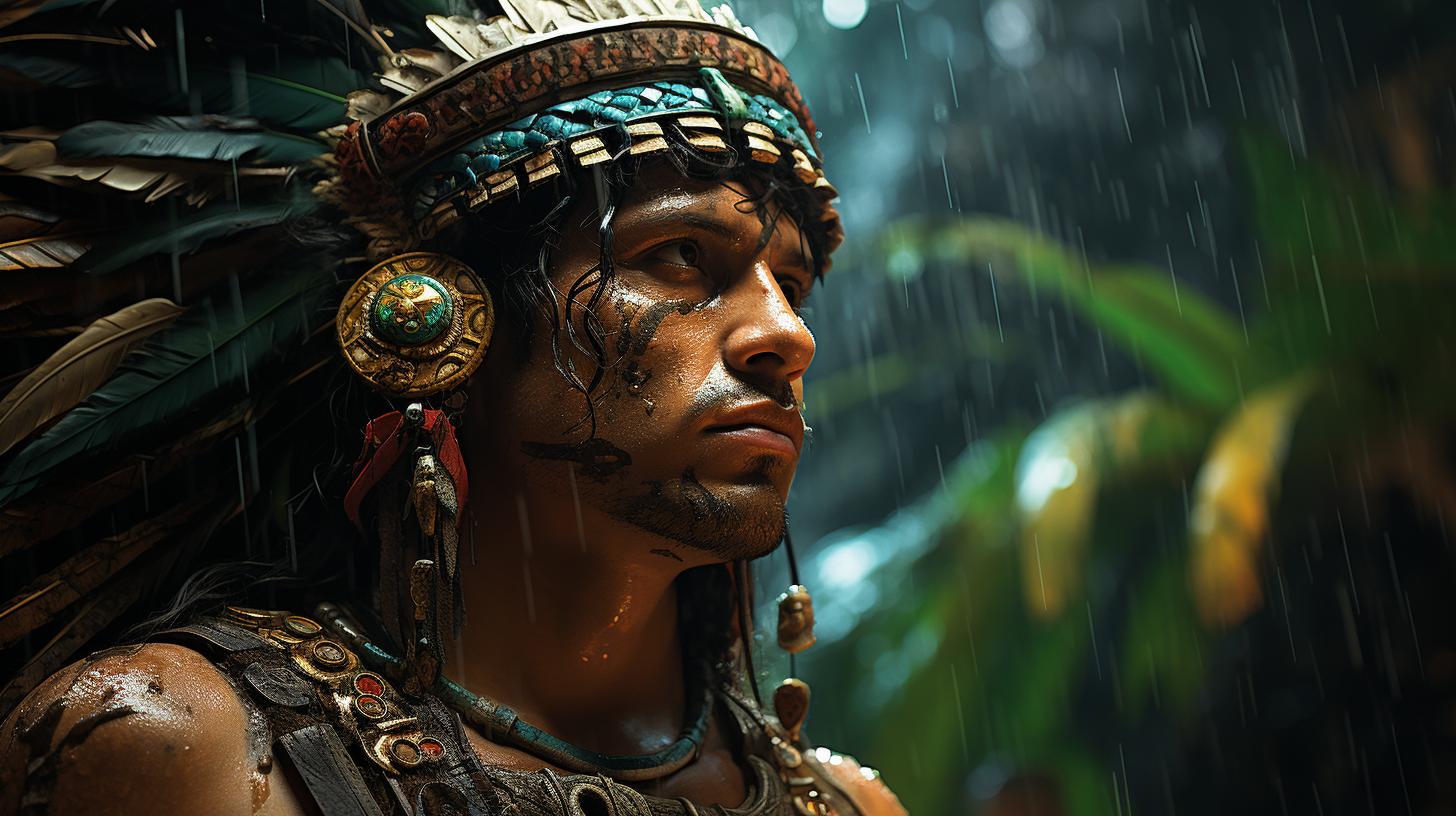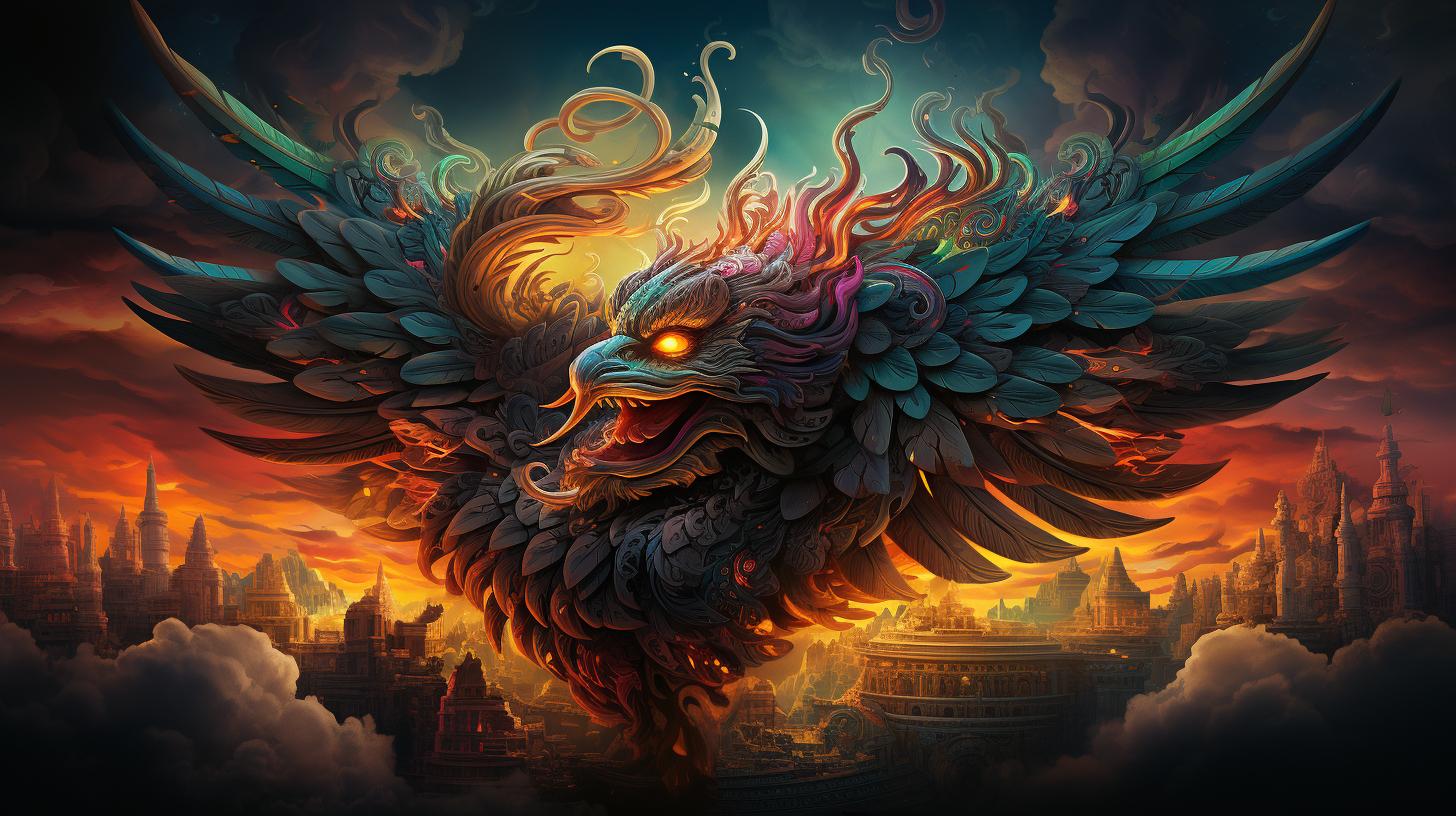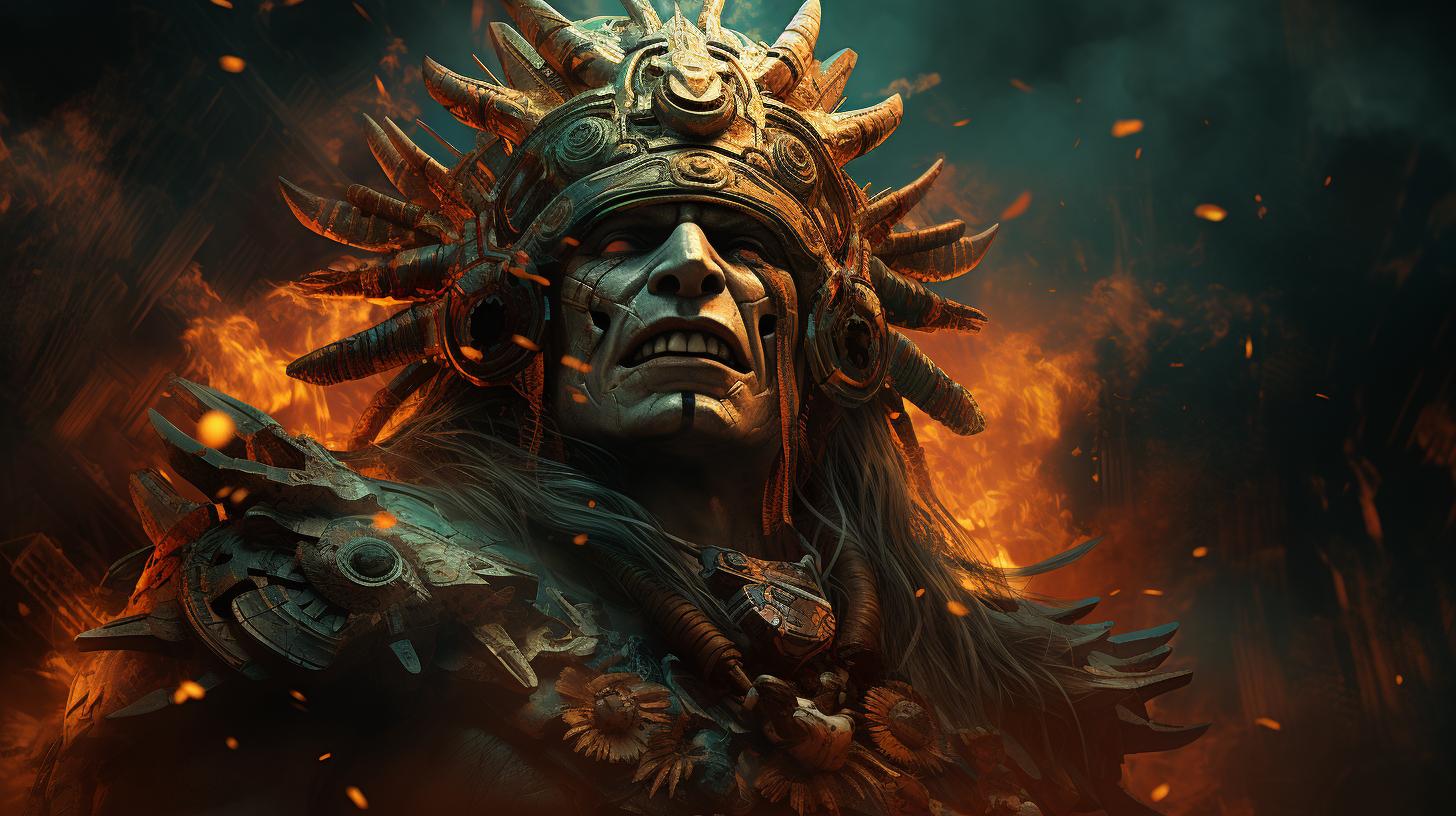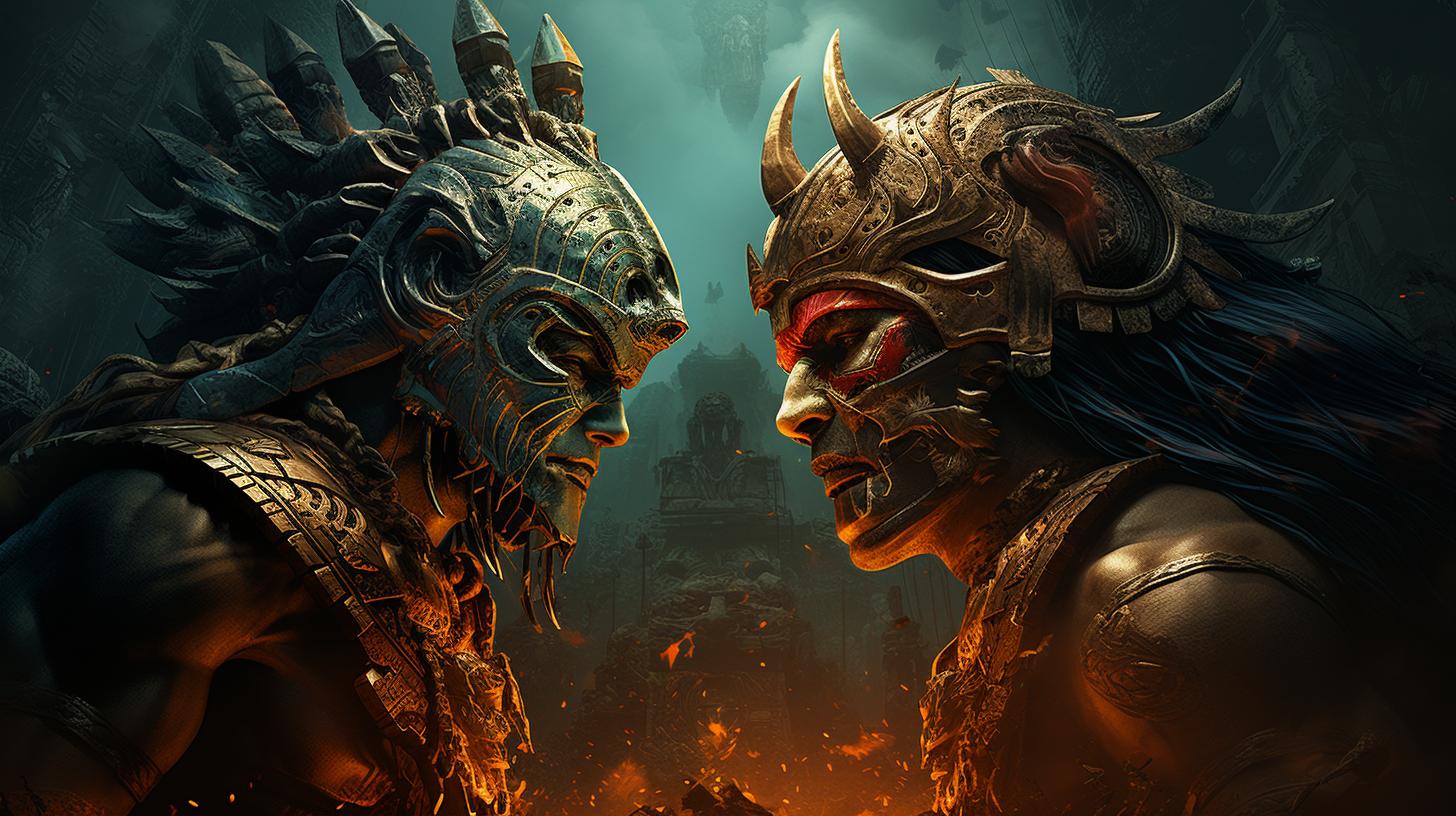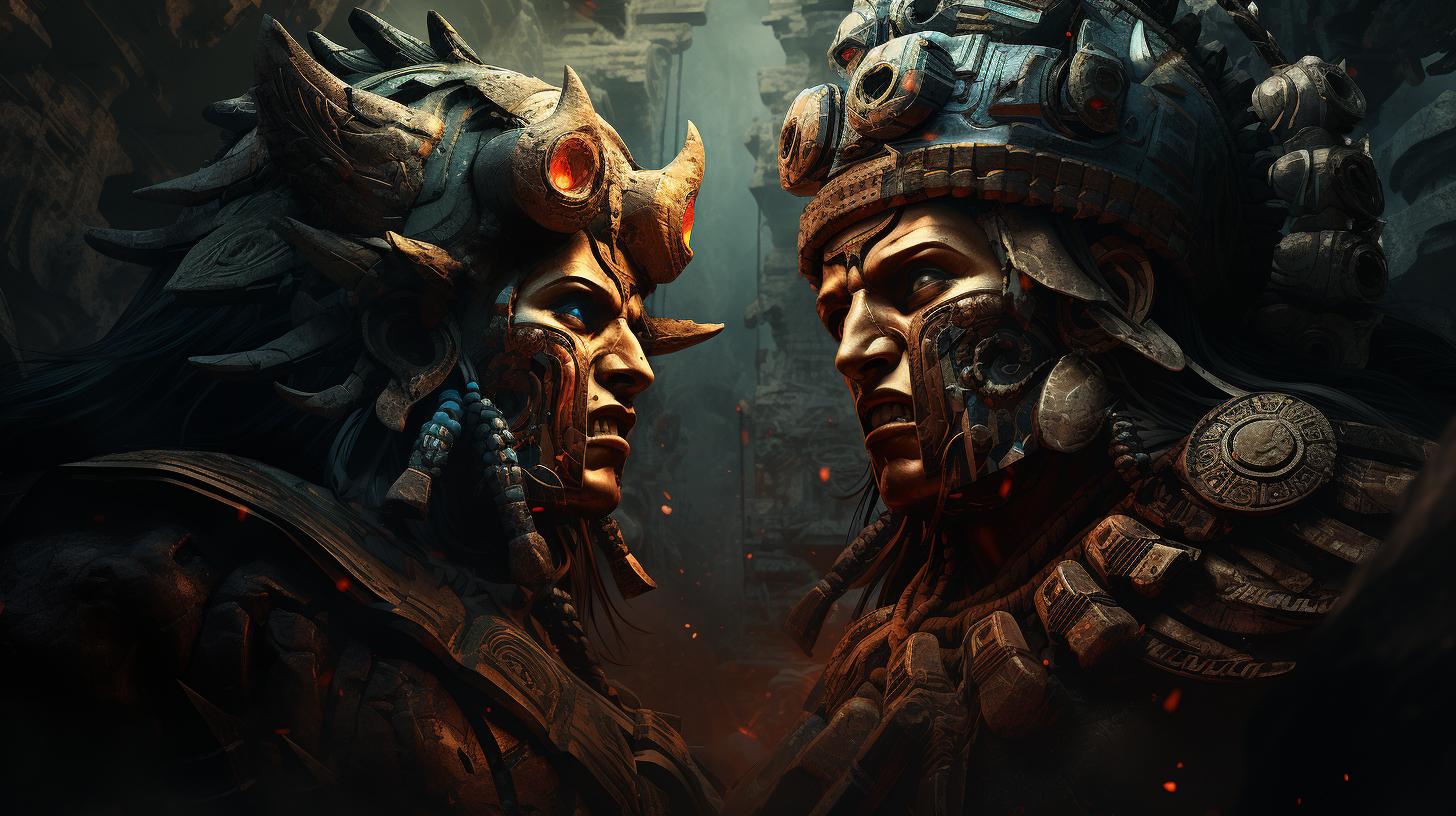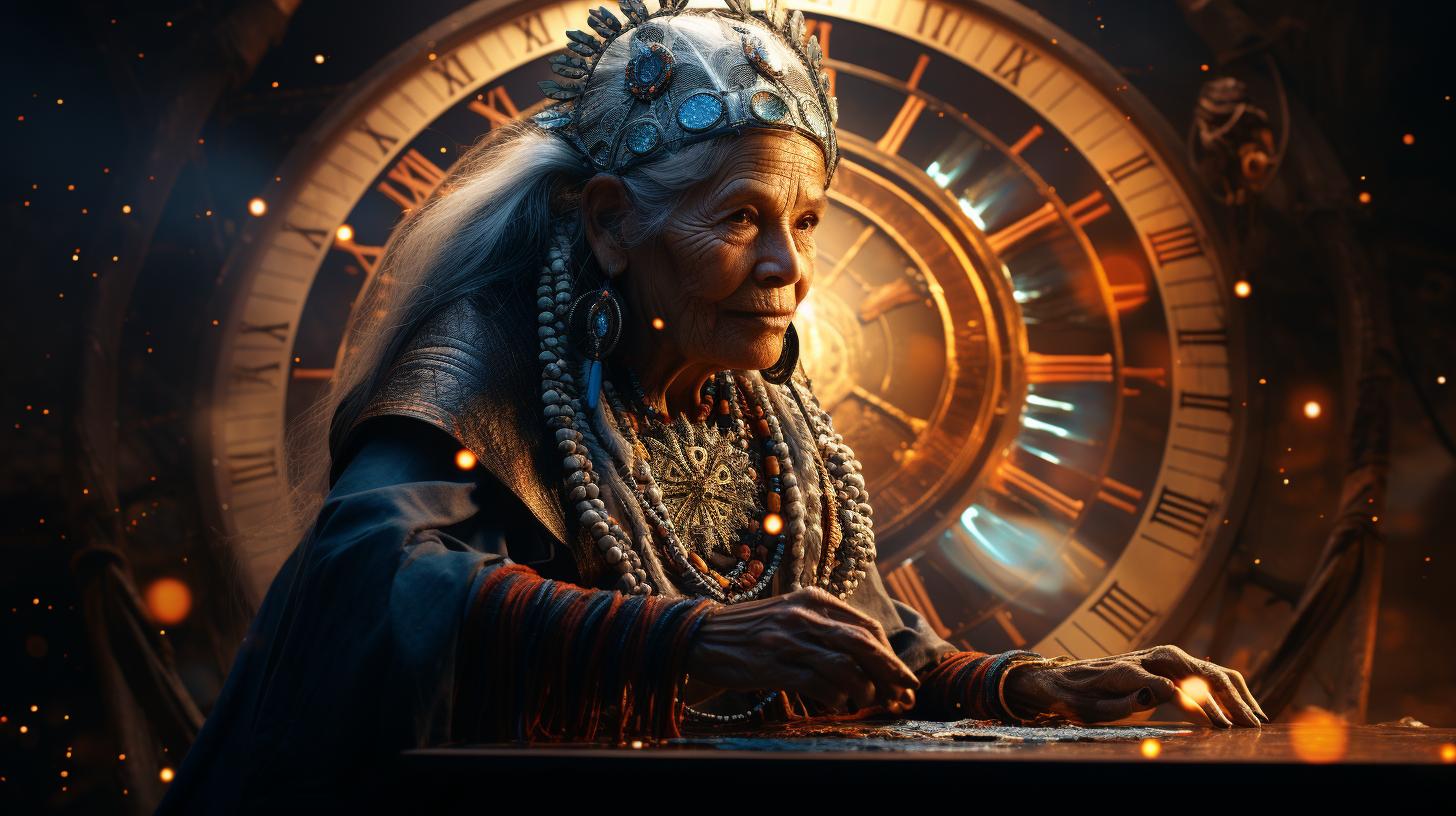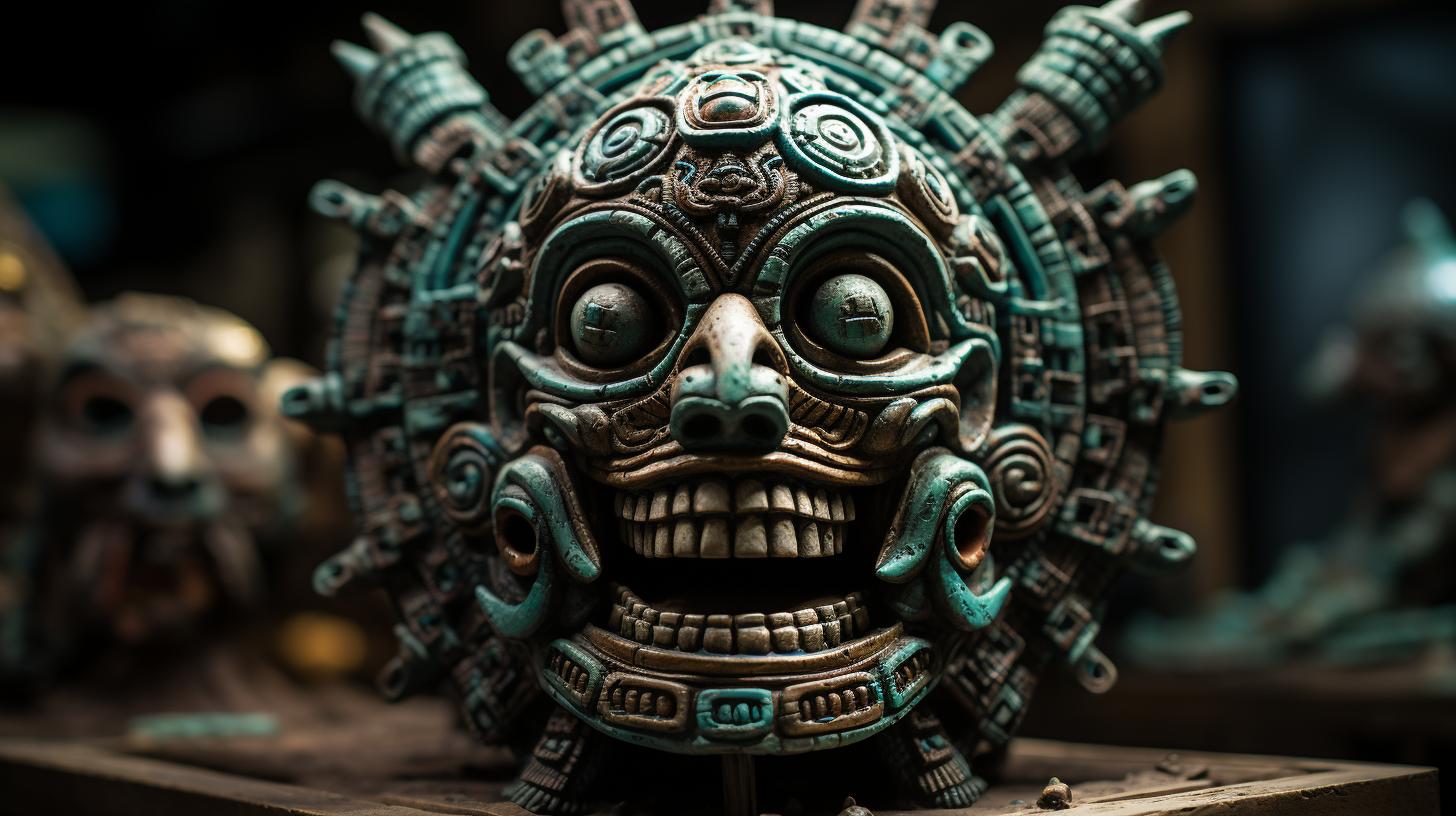Mayan God Yum Kaax: The Protector of Forests and Wildlife
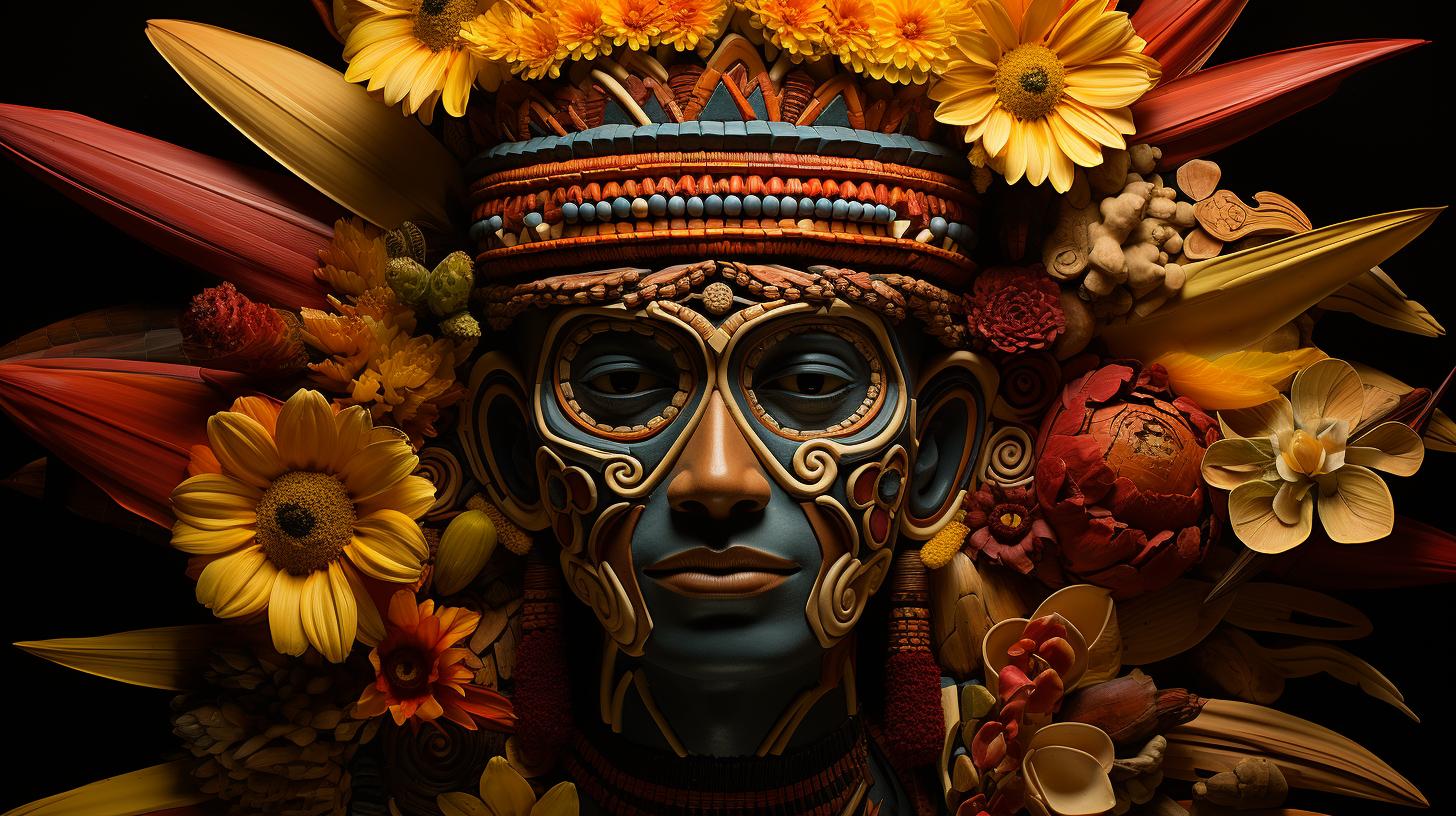
Yum Kaax, the Mayan god of forests, wildlife, and agriculture, holds a significant role in Maya culture. As the protector of the wilderness and important animals for hunters, Yum Kaax was revered as a youthful deity bearing the titles “lord of the forests” and “lord of the harvest.”
Farmers sought his protection against wildlife and presented him with their first fruits. Associated with Chac, the rain god, rituals and prayers were performed to secure Yum Kaax’s favor for successful hunting and bountiful crops.
Today, some traditions, including contemporary hunting rituals, continue to preserve the legacy of Yum Kaax.
The Role of Yum Kaax in Maya Culture
The Mythological Importance of Yum Kaax
In Maya culture, Yum Kaax holds a significant place as a revered deity. Believed to be one of the younger gods, Yum Kaax is associated with the abundant vegetation and wildlife found in the Mayan lands.
He is often depicted as an attractive young god adorned with a maize diadem on his head, symbolizing his affinity with agriculture. The mythology surrounding Yum Kaax emphasizes his vital role in the fertility and growth of the natural world.
Yum Kaax as the Protector of Animals and Wildlife
Yum Kaax assumes the crucial role of safeguarding the forests and the creatures dwelling within them. As the lord of the forests, he is the guardian of the diverse wildlife that sustains the ecosystems.
Hunters would invoke Yum Kaax for success in their endeavors, believing that his favor would lead them to bountiful Game. The god’s association with hunting highlights his significance in balancing the delicate relationship between humans and nature.
Overall, Yum Kaax not only contributes to the well-being of the Maya community but also represents their deep connection and reverence for the natural world. His mythological importance and role as the protector of animals and wildlife demonstrate the integral part he plays within Maya culture.
Yum Kaax and Agriculture in Maya Society
Yum Kaax, the Mayan god, played a significant role in the agricultural practices of the Maya society. He was closely associated with farming and harvesting, as cultivating crops was essential for the survival and prosperity of the civilization.
Yum Kaax’s Association with Farming and Harvesting
Yum Kaax was revered as the deity responsible for the bountiful growth of crops and the overall success of agriculture. The Maya believed that he had the power to bless their fields and ensure abundant harvests year after year.
The farmers recognized Yum Kaax as the provider of sustenance through the fertility of the land. They relied on his divine influence and invoked his assistance in cultivating various crops, including maize, beans, squash, and chili peppers, which formed the staples of their diet.
Maya farmers understood the importance of crop rotation and maintaining the fertility of the soil. They believed that Yum Kaax guided them in making the right agricultural decisions, such as the timing of planting, selecting suitable fields, and implementing effective cultivation techniques.
Offerings and Rituals to Yum Kaax for Agricultural Success
To seek Yum Kaax’s blessings and ensure agricultural prosperity, the Maya farmers performed dedicated rituals and offered various offerings to honor and please the deity.
First Fruits:
The farmers would present the first fruits of their harvest to Yum Kaax as an expression of gratitude and to seek his continued favor. These offerings symbolized their acknowledgment of his role in providing sustenance to the community.
Ceremonial Plantings:
Special ceremonial plantings would take place where the farmers sowed seeds in honor of Yum Kaax.
These plantings were accompanied by prayers and rituals to ensure a successful growing season.
Animal Sacrifices:
In some instances, animal sacrifices were made to appease Yum Kaax and maintain his goodwill. These sacrifices were seen as acts of devotion and were believed to secure the fertility of the land and the prosperity of the agricultural activities.
By performing these rituals and offering sincere reverence to Yum Kaax, the Maya farmers sought his guidance, protection, and blessings for a thriving agricultural existence.
Yum Kaax and Hunting Traditions among the Maya
Yum Kaax, the Mayan god of vegetation and wildlife, played a significant role in the hunting traditions of the Maya people. Hunting was not only a means of sustenance but also a spiritual practice, and invoking Yum Kaax was crucial for achieving success in the hunt.
Invoking Yum Kaax for Hunting Success
The Maya hunters believed that by invoking Yum Kaax, they could gain his favor and guidance in their hunting endeavors. Before setting out on a hunt, they would perform rituals and offer prayers to Yum Kaax, seeking his assistance in finding game and ensuring a successful hunt.
The hunters would approach the hunt with reverence, understanding that their actions were intertwined with nature and the divine. They believed that Yum Kaax, as the protector of animals, held the power to guide them to their prey and grant them the skills necessary for a fruitful hunt.
Legends and Beliefs about Yum Kaax’s Powers in Hunting
Throughout Maya mythology, several legends and beliefs revolve around Yum Kaax’s extraordinary powers in hunting. It was believed that Yum Kaax could help hunters select exclusive hunting territories and increase their chances of capturing prized game.
According to one legend, it was said that Yum Kaax would guide hunters to the animals they sought. Hunters believed that by respecting the natural order and offering gratitude to Yum Kaax, he would provide them with successful hunting experiences.
- Yum Kaax’s role as the patron of hunters was deeply ingrained in Maya culture, and his legends and beliefs served as an inspiration for hunters to maintain a harmonious relationship with nature.
- The Maya hunters respected the creatures they pursued, understanding the interconnectedness of all living beings.
The hunting traditions among the Maya were not just about sustenance but about preserving the delicate balance of the natural world and showing reverence for the resources provided by Yum Kaax.
These traditions continue to echo through time, as contemporary hunters honor and respect Yum Kaax’s legacy.
By upholding these traditions and acknowledging the profound connection between humans and nature, the Maya people pay tribute to their ancient beliefs and keep the spirit of Yum Kaax alive in their hunting practices.
The Connection Between Yum Kaax and Chac, the Rain God
Yum Kaax, the Mayan god of vegetation and wildlife, shared a close association with Chac, the rain god, in Maya culture. Rain was of utmost importance for the growth and vitality of vegetation and crops, which were vital for the sustenance of the community.
The Importance of Rain for Vegetation and Crops
Rainfall played a crucial role in the survival of the flora and fauna in the Mesoamerican forests, making it an essential aspect of Maya agricultural practices and beliefs. The abundant rainfall nourished the soil, enabling the growth of crops such as maize, beans, and squash, which formed the staple diet of the Maya people.
The Maya recognized that without rainfall, their agricultural efforts would be in vain, as it was the primary source of water for irrigation and natural hydration of the crops. Insufficient rainfall could result in crop failure, famine, and even economic and social instability within the community.
Rituals and Prayers for Yum Kaax’s Permission and Protection
To ensure the favor of Yum Kaax and Chac, rituals and prayers were conducted by the Maya community. These sacred ceremonies sought permission from the deities for agricultural activities, as well as protection against natural disasters or excessive rain that could lead to floods and other unfavorable conditions.
- The Maya offered various offerings and sacrifices to seek the blessings of Yum Kaax and Chac.
- Elaborate rituals were performed at specific times throughout the agricultural cycle, such as before sowing seeds, during harvest, and during periods of drought or excessive rainfall.
- The community came together to perform dances, songs, and prayers to honor the gods and express their gratitude for the life-sustaining rains.
These rituals served as a means of communication and reverence, acknowledging the interdependency between humans, the gods, and the natural elements that sustained their livelihood.
Through their deep connection with Chac, the rain god, the Maya understood the significance of harmonizing agricultural practices with the natural phenomenon of rainfall. This relationship exemplified their understanding of the delicate balance necessary for successful crop cultivation and the reverence they held for the deities responsible for their prosperous harvests.
The Continuing Influence of Mayan Traditions Today
Mayan traditions and the mythology surrounding Yum Kaax continue to have a significant impact on contemporary Maya communities. The rich cultural heritage and belief systems have been passed down through generations, keeping these traditions alive.
Contemporary Hunting Rituals and Traditions
Hunting holds a deep cultural and spiritual significance among the Maya, and modern-day hunters still incorporate traditional rituals to honor Yum Kaax and seek his blessings for a successful hunt. These rituals often involve offerings and prayers, seeking permission from the god of the forests and wildlife to harvest from their domains.
Hunting ceremonies may begin with purifying the hunters through the burning of copal, a resinous tree sap used for ceremonial purposes. They then invoke Yum Kaax and offer him symbolic offerings, such as tobacco, corn, and animal parts, as a gesture of gratitude for his protection and guidance in their hunting endeavors.
Additionally, hunters may wear traditional clothing and adorn themselves with sacred amulets and charms, believed to bring good fortune and attract the favor of Yum Kaax. These rituals not only serve as a way to honor the god but also strengthen the spiritual connection between the hunters and the natural world.
Preserving the Mythology and Legacy of Yum Kaax
Efforts to preserve the mythology and legacy of Yum Kaax are essential in keeping Mayan traditions alive. Organizations, community groups, and indigenous leaders work tirelessly to educate younger generations about the ancient beliefs and practices associated with this deity.
Through storytelling, art, music, and dance, the significance of Yum Kaax is passed down to future generations, ensuring that the wisdom and reverence for nature are perpetuated. Cultural festivals and events provide opportunities to showcase the rituals, dances, and ceremonies associated with Yum Kaax, fostering a sense of pride and connection to Mayan heritage.
Furthermore, archaeological sites and museums play a vital role in preserving and displaying artifacts related to Yum Kaax and Mayan mythology. These institutions help to deepen our understanding of ancient traditions and provide a glimpse into the spiritual world of the Maya.
In conclusion, the enduring influence of Mayan traditions and beliefs, centered around Yum Kaax, can still be witnessed today. Contemporary hunting rituals and efforts to preserve the mythology and legacy of this Mayan god contribute to the cultural richness and spiritual connection that the Maya people uphold in the modern world.
.

